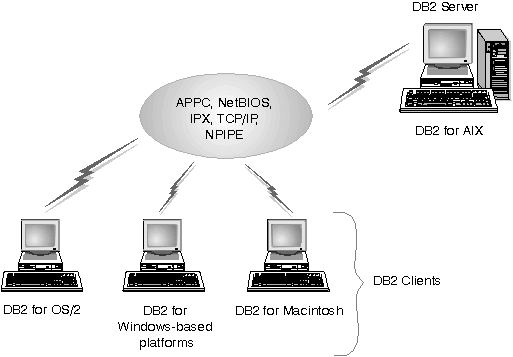

 |
|
|
| Quick Beginnings | Provides details about DB2 client/server configurations, and contains installation instructions. | |
|
|
|
DB2 runs in a client/server environment. In this environment, computers are linked together in a network, and can act as a server, a client, or both. A server provides services to other computers on the network, while a client requests services. In the DB2 client/server environment, servers manage databases, and clients run applications that access databases.
DB2 supports many different client/server configurations. You can have several clients on different platforms connected to one server (as shown in Figure 1), or you can have multiple clients connected to several servers, all on different platforms. You can even have Web-based applications that access DB2 databases across the Internet.
Figure 1. One possible DB2 client/server configuration
 |
A client application that needs to access a DB2 database sends a request to the server. The request is coded in Structured Query Language (SQL), the language used to access DB2 databases. The server processes the request, and returns the data to the client application. In this context, DB2 programming is the development of client applications that access DB2 databases to retrieve, store, or manipulate data.
DB2 programming also includes developing user-defined functions and stored procedures which run on the server. These topics are discussed in "User-defined Functions" and "Stored Procedures".
You can develop client applications using the following: